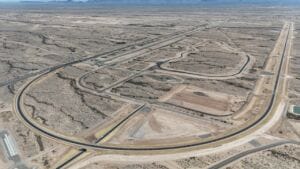While the sun does its due diligence in illuminating the majesty of the Sonoran desert and warming the spirits of visitors near and far, Arizona’s tourism industry has and continues to do its part for Arizona’s business community by sharing its economic impact with a host of additional industries. And, with $22.7 billion spent by visitors in 2017, each Arizona household gained a $1,293 annual savings thanks to the $3.37 billion in tourism-generated tax revenue.
“Tourism is a vital part of an Arizona economy that is diverse, collaborative and relentlessly growing,” says Arizona Gov. Doug Ducey. “The consumer spending by the 44 million visitors who came to our state last year contributed to every Arizonan’s economic security by creating and sustaining jobs, and generating tax revenues that elevate our quality of life.”
According to the Arizona Office of Tourism’s research, visitor spending directly supported 187,000 jobs in the state in 2017, and those tourism-related jobs generated $6.9 billion in employment revenue.
“These record numbers are a testament not only to Arizona’s appeal as a visitor destination, but to how effectively our state’s tourism community — at every level, state and local, public and private — markets Arizona to the rest of the world,” says Arizona Office of Tourism Director Debbie Johnson.
What is it, exactly, that continues to fuel tourism prosperity in the state of “Ditat Deus?”
The planes, the planes!
Let’s begin by addressing one of Arizona tourism’s biggest money-makers.
Did you know that Arizona’s very own Phoenix Sky Harbor airport contributes $38 billion in yearly economic offerings? This makes one of Arizona’s most notable transportation hubs the largest tourism contributor in the state.
“With less desirable weather around the country, Phoenix is the perfect place for visitors to enjoy their vacations,” explains Deborah Ostreicher, assistant aviation director for the City of Phoenix. “And as my economic development partners remind me, coming as a tourist is often the first step to doing business here.”
In addition to bringing in visitors for their dose of sun and fun, Sky Harbor is responsible for generating 57,432 jobs.
Beyond the scope of Sky Harbor airport employees, economic activity generated by the Phoenix Airport System supported an additional 269,580 jobs in the regional economy, with a payroll of $13.5 billion.
Meetings, greetings and gains
“Based on the 2017 Greater Phoenix Visitor Profile report produced by Longwoods International, 15 percent of domestic overnight visitors to the Metro Phoenix area said the main purpose of their trip was a conference, convention or business trip,” says Megan Trummel, director of marketing and corporate communications for Visit Phoenix.
In 2018, the estimated direct spending from meetings and conventions booked by Visit Phoenix at the Phoenix Convention Center was upwards of $325 million, according to Trummel.
As Ostreicher made clear, nearly 365 days of desirable weather compels companies and corporations throughout the nation and globe to choose Arizona as a meetings and events destination.
“Full-service hotels and resorts in the Phoenix area depend heavily on group business to hit key performance benchmarks,” Trummel says. “Based on data from STR, Inc., in 2018, more than 44 percent of occupancy at luxury and upscale hotels and resort properties in the Greater Phoenix area was from group business. This percentage was one of the highest in the nation when comparing STR’s Top 25 U.S. Markets.”
And while Greater Phoenix and Arizona holistically and naturally attract business travelers, the magnitude of conferences and events is largely due to targeted tourism efforts.
Group effort
“The Arizona Office of Tourism and the individual convention and visitors bureaus coordinate to educate, inform and drive our meetings and events industry, providing a number of opportunities,” says Stephanie Liegeois, Bon Appetit general manager at the Musical Instrument Museum. “There is much comradery amongst our cities. We are all on the same page when it comes to driving the tourism industry and making Arizona a top destination.”
And the cities also benefit from the collaborative approach. Johnson points out that nearly $2 billion of the tax revenue generated by tourism in 2017 benefited state and local governments. Tourism-related tax collections at the city and county level increased 14 percent over the previous year, while tourism-related state tax collections were up 9 percent.
“These are tax dollars that pay the salaries of teachers and police officers, and fund the upkeep of parks, infrastructure, spring-training stadiums and youth-sports programs,” Johnson says.
In other words, success in the tourism sectors breeds success across the board.
“If you don’t have large revenue producing meetings and events, then you don’t have the revenue to put back into tourism items and infrastructure,” adds David A. Twigger, creative director and founder of Vermilion Events and Design Group. “To quote one of my favorite Disney movies, it is our own little, ‘circle of life.’ Arizona understands this.”
Contributions recirculated into Arizona’s tourism infrastructure should remain plentiful with the uptick in regional and national economic health, but there is simply no shortage of events to be had.
“Large events like the Waste Management Phoenix Open, Barrett Jackson, the M3 Music Festival and large arena sporting events, combined with an abundance of the country’s best hotels and resorts, is such an incredible draw for high-profile companies,” Twigger notes.
Unique adventures and opportunities
Regardless of why visitors come to Arizona — business, leisure or both — they are taking advantage of the abundance of hospitality, entertainment and recreational activities. We know this through the $62 million Arizona’s visitors spent per day in 2017.
The 44 million people who visited Arizona in 2017 helped spread economic prosperity throughout the local entertainment, recreational, and hospitality sectors.
Data demonstrates that out-of-state baseball enthusiasts spend upwards of $373 million throughout the Valley during Cactus League season. Similarly, the Final Four hosted by State Farm Stadium drew 60,000 out-of-state sports fans who stayed an average of 4.16 nights and spent close to $500 per day each.
Perhaps not surprising, because of the state’s nearly perfect weather, Arizona attracts a large percentage of golfers and is among the Top 5 golf destinations in the country. With 300-plus golf courses and close to 100 golf events scheduled throughout a calendar year, including charity, opens, and championships, it’s easy to see why.
Then, of course, there are unique venues to visit and experience, such as The Phoenix Symphony, Phoenix Art Museum, Heard Museum, Children’s Museum of Phoenix, Ballet Arizona and MIM.
“MIM is the world’s only global musical instrument museum,” Liegeois says, “delighting and inspiring guests with more than 6,500 instruments and musical traditions from every corner of the globe. The Music Theater hosts 300 performances a year, bringing the galleries to life with exceptional performances of all genres and types of music. It’s been called the best theater of its size in the country.”
While business attendees, sports fans and vacationers take advantage of unique destinations and attractions, they have more than 160 hotels and resorts in the Valley from which to choose.
“Arizona has some of the most unique and breathtaking nature experiences in the country,” Twigger says. “From desert hikes to red rock meditations to snow skiing, it is all here. And nightlife — we have chic nightclubs, neighborhood bars with live music, an inspiring art scene and the hippest hipster festival scene. I dare someone to come to Arizona and not find something to do.”




